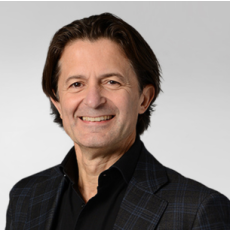Vertiv is a global leader in designing, building, and servicing critical infrastructure that enables vital applications for data centers.
Why is Vertiv important in today’s world, especially with the rising importance of data centers?
Ten years ago, the data center industry might not have been considered exciting, but we knew it would become successful. Back then, we saw the continuous rise in data traffic, and we knew that trend would not slow. Now, new technology—particularly AI—has added another layer of demand, accelerating growth even more. AI will not only change the way the world operates, but it is also transforming how data centers function. The shift toward AI factories requires new designs and capabilities. Data centers always needed power and cooling, but the growing density of IT infrastructure brings new challenges. The industry is moving toward denser, more advanced technology, and players like Vertiv, who can innovate and scale quickly, will have an advantage.
Vertiv has seen a significant increase in orders. How have you prepared the company to achieve this level of growth?
We have grown significantly, with a trailing 12-month order growth rate of about 37%. Achieving this requires several factors: first, having a well-aligned supply chain. We recently opened a new factory in South Carolina, and we are expanding capacity across our 23 facilities worldwide. Optimizing efficiency and productivity through lean manufacturing also frees up hidden capacity in our existing operations. The other key element is technology. In the past, the industry evolved slowly, but that is no longer the case. We are ramping up our engineering investments beyond the 13% annual growth target we shared with investors. Collaborating closely with NVIDIA means our product roadmaps align, so we are ready to support the densest IT systems as they emerge.
What technological innovations in data centers and cooling excite you the most?
The increasing use of GPUs is driving a redesign of data centers. For context, today’s racks typically operate at around 10 kilowatts, but we are already preparing for racks that exceed 100 kilowatts. In the future, we expect to see racks operating at 500 kilowatts, and eventually 1 megawatt. This extreme density creates new challenges and opportunities. Traditional air cooling is no longer sufficient at these levels, which is where liquid cooling becomes essential. However, some components will still require air cooling, creating more complex systems that combine different cooling technologies. Our ability to deliver complete solutions, including heat rejection and prefabrication, allows us to meet the growing demand for efficiency and rapid deployment in these environments.
With the rapid growth of AI, do you foresee any challenges, such as energy efficiency issues or potential limitations?
AI is still in its early stages, and its potential is enormous. It will not only support human operators but also enable machines to collaborate with one another. As the technology matures, AI will evolve and improve itself, accelerating progress even further. We are optimistic about the future.
There is currently strong demand for data center infrastructure, with a projected growth rate of around 15% per year. This growth reflects the increasing appetite for AI, which requires advanced, energy efficient infrastructure to support it. While data center construction is complex, we believe this demand will remain steady, and we are well-positioned to meet it.
Where do you see AI and the industry as a whole by 2030?
Predicting the future is difficult, but being involved in the infrastructure side of AI—what you referred to as the "picks and shovels" of the gold rush—is an excellent place to be. The companies driving AI have deep pockets and the resources to make it a success, and we expect to see significant advances in the coming years. Organizations that do not adopt AI risk being left behind. AI is becoming essential across industries, not just to optimize processes but also to enhance customer experiences.
What keeps you awake at night as you prepare Vertiv for the future?
I generally sleep well, but what keeps me motivated is the need to maintain and strengthen Vertiv’s leadership position—not just for today, but for the years ahead. Our focus is on operational excellence and building strong relationships with key industry players. We believe we are not yet operating at our full potential, and that drives us to continuously improve.
Staying ahead of technological change requires relentless focus and execution. I am excited about the innovations that lie ahead, and our goal is to continue to be a leader in the industry by staying at the forefront of these developments.
What future technologies can readers expect Vertiv to embrace?
There are some things we cannot disclose, but what readers should understand is that behind the AI revolution lies a complex physical infrastructure. Servers and racks are becoming more advanced at an unprecedented pace, and the systems that power and cool them must evolve accordingly. Vertiv is focused on ensuring that this infrastructure keeps pace with AI’s development. As rack densities rise from 10 kilowatts to 100, 500, and eventually 1 megawatt, the challenges around power and cooling will become even more demanding. With our broad portfolio, from grid integration to chip-level power management, we are uniquely positioned to address these challenges and ensure the industry scales effectively.






